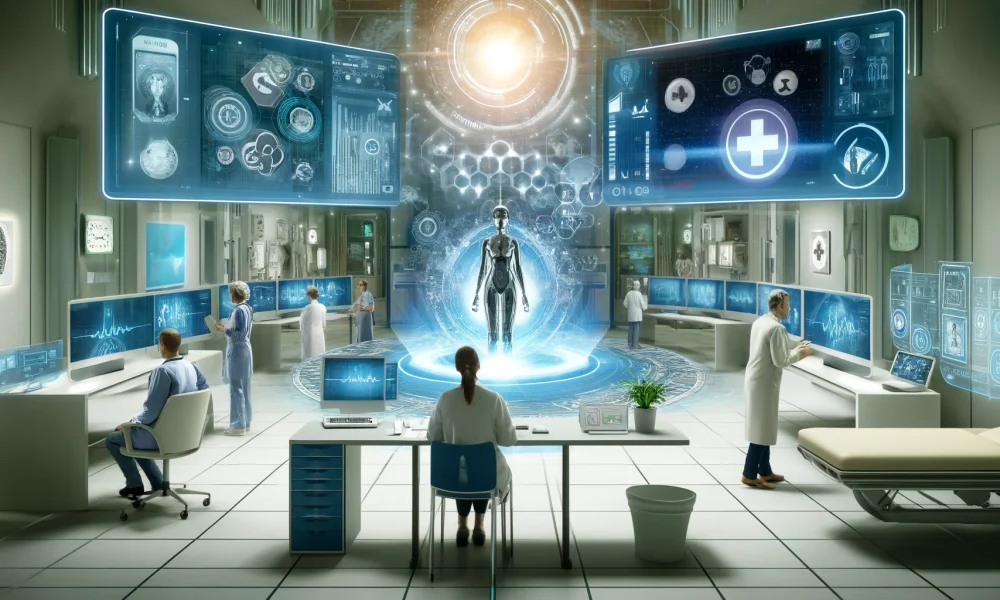Technology is revolutionizing various industries, and healthcare is no exception. Telehealth, originally developed for monitoring astronauts’ health in space, has become an essential tool in healthcare, especially during the COVID-19 pandemic. The integration of Artificial Intelligence (AI) has taken telehealth to a new level, with AI-powered virtual consultations and remote monitoring bridging the gap between doctors and patients. This article delves into how AI and telehealth are ushering in a new era of medical practices, enhancing accessibility and efficiency in healthcare delivery.
Understanding Telehealth
Telehealth involves delivering healthcare services and information through telecommunications and digital technologies. This method allows patients to receive medical care remotely, eliminating the need for in-person visits. Telehealth includes virtual consultations, health education, remote vital sign monitoring, and transmitting medical data. The main aim is to make healthcare more accessible, especially for those in remote areas, and to streamline care management for both patients and providers.
The Evolution of Telehealth
Telehealth is not a new concept; it dates back to the early 20th century when radio and telephone were used to reach remote patients. The advent of television and the internet expanded telehealth’s capabilities, introducing video consultations and advanced digital platforms. The COVID-19 pandemic accelerated telehealth adoption, making it crucial for managing non-emergency consultations safely. With AI integration, telehealth has evolved from a basic communication tool to a sophisticated platform offering personalized healthcare services.
AI-Powered Virtual Consultations and Remote Monitoring
Artificial Intelligence is revolutionizing telehealth by enhancing efficiency, accessibility, and personalization. AI-driven telehealth platforms use tools like chatbots to autonomously handle patient interactions, schedule appointments, and provide medical information. Advanced AI algorithms analyze patient data, predict health outcomes, and alert healthcare providers to critical changes in a patient’s condition, enabling swift medical responses. Here are some popular AI-powered telehealth systems:
- Ada Health: This AI-chatbot offers personalized health assessments and guides users to appropriate medical care levels. Ada uses advanced AI techniques like probabilistic reasoning and Bayesian methods to simplify and speed up the diagnostic process. It assesses symptoms against a database of 3,600 conditions and over 31,000 ICD-10 codes, covering 99.5% of all diagnosable conditions. With over 13 million global users, Ada Health exemplifies transparent, explainable AI in healthcare.
- OneRemission: This application supports cancer survivors, fighters, and their supporters with an AI-powered chatbot offering round-the-clock support and information on cancer care and post-treatment lifestyle practices.
- Teladoc Health: This platform uses AI to optimize telehealth appointments and connect patients with doctors across various technologies.
- Babylon Health: Babylon offers a range of healthcare services through its AI-driven app, allowing users to connect with healthcare professionals for consultations.
- Biofourmis: This platform uses an AI-driven analytics engine, Biovitals, to monitor real-time biomarkers and predict health issues in advance.
Advantages of AI in Telehealth
Integrating AI into telehealth offers numerous benefits that promise to reshape medical practice. Advantages include enhanced quality of consultations, predictive insights, improved patient engagement and education, and operational efficiency in healthcare delivery.
Conclusion
The integration of AI with telehealth is transforming healthcare by improving accessibility, efficiency, and personalization. AI-powered systems are revolutionizing healthcare delivery by providing advanced diagnostics, personalized consultations, and continuous remote monitoring. This integration not only enhances the quality of healthcare but also enables predictive insights that can anticipate disease progression and reduce healthcare costs. As these technologies evolve, they hold the promise of making healthcare more accessible and effective for underserved populations.




